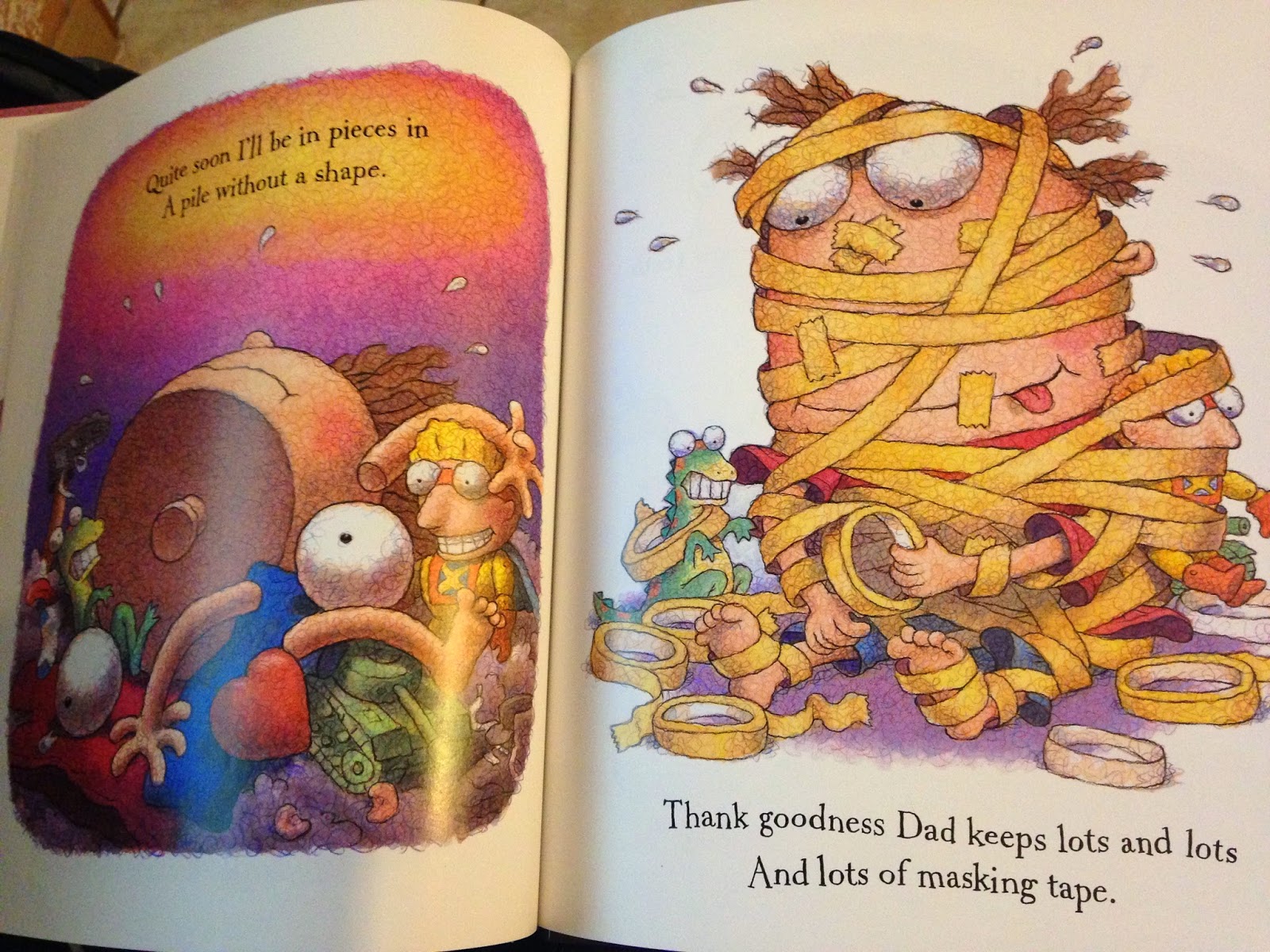The illustrations in Parts are to die for. The tell the story of what a little boy is thinking about as he goes through his day. The illustrations are absolutely essential to the story and without them I really don't think the reader would be able to appreciate the text as much. The help make light heart of a boys fears while teaching the reader body awareness and safety. One of my favorite images from the story was the image of all the boys stuffing coming out. I think this is a great book that children can relate to because often times there are some silly things that kids find scary.
The intended interest level for Parts is for Kindergarten-second grade. However I believe that it can be applied to children of all ages as far as being used in literature. The genre of this book is fantasy, and comedy.
One of the biggest literary devices found in the story Parts is rhyming. Rhyming occurs when two end words sound the same. I think this story would be an excellent teaching aid for introducing students to the ideal of what rhyming is. On the first page of the story rhyme can be seen. An example is: "I just don't know what's going on or why it has to be. But every day it's something worse. Whats happening to me?"
Classroom Application:
Critical Thinking Preliminary and Post Reading Questions
- Before teachers begin reading Parts to students they should begin by showing students the cover of the book a long with a few images to get them thinking about what the story might be about.
Teachers should ask questions about the chosen images to get the students engaged and problem solving. Some question that could be asked include: What do you think this story is going to be about?, What do you think is going to happen to the boy?, Why do you think the boy looks so nervous on the cover of Parts?, What parts do you think the book is about?, etc. - After reading Parts teachers should expand on the reading by asking questions that will get students thinking about the future and what happened in the story. For example: Do you think that the boy feels better after talking to his parents?, Will the boy still worry about his body falling apart?, What view point was the story told in and give an example to defend your response?, etc.
Demonstrating Cause and Effect
- Why do you think that the parents decided to talk to their son?
- Do you know why the boy was so scared?
- Why was the boy worried about all his hair falling out?
- Why did the boy tape himself up?
Character Analysis
- Describe the boy?
- Describe the boy's parents?
- What does the boy think about what his parents told him?
Personal Connections
- Teachers should ask students what things from the story they can relate to their own lives. For example having parents, having fears, having toys, every finding lint in their belly buttons, ever have a piece of hair fall out, etc.
Sequencing Skills
- Teachers can expand on student sequencing skills by asking students to draw several pictures about their favorite parts of the story and then having them put their pictures in order of how they occurred in the story.
Summarizing the Story
- The teacher can call on students to help summarizing what happened in the story they just read. The teacher should ask each student to add to the summary before summarizing herself/himself about what happened in the story.
Theme
- The teacher should ask students to write down what they think the purpose or theme of the story was. It could have been safety, body awareness, etc.
Interactive Fun
- I think it would be nice for the teacher to read the story to the students and ask engaging question page by page.







I think this would be a good book for a teacher to read to her class prior to discussing the parts of the body with young children. A teacher could read this book and then have a discussion with the children regarding the likelihood of their stuffing coming out etc. The teacher could then conduct a science lesson on the parts of the body, or have young children create their own illustrations for their favorite parts of the book.
ReplyDelete